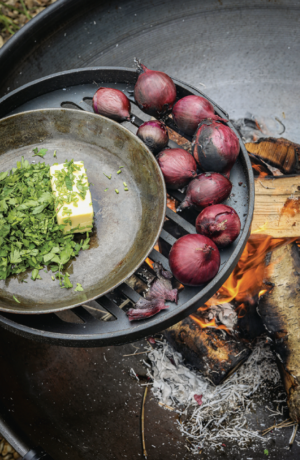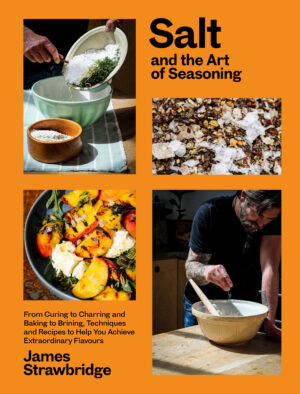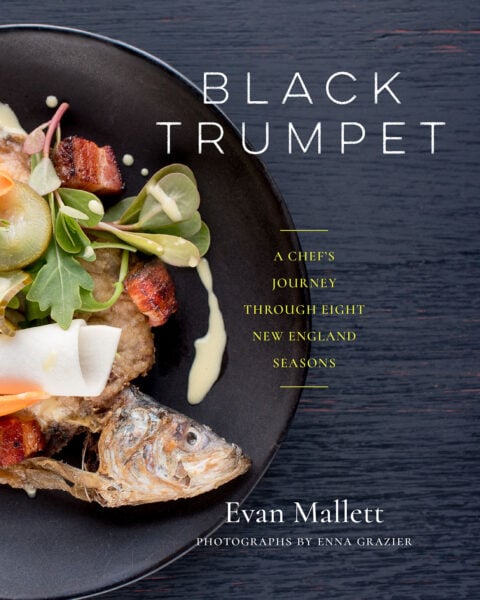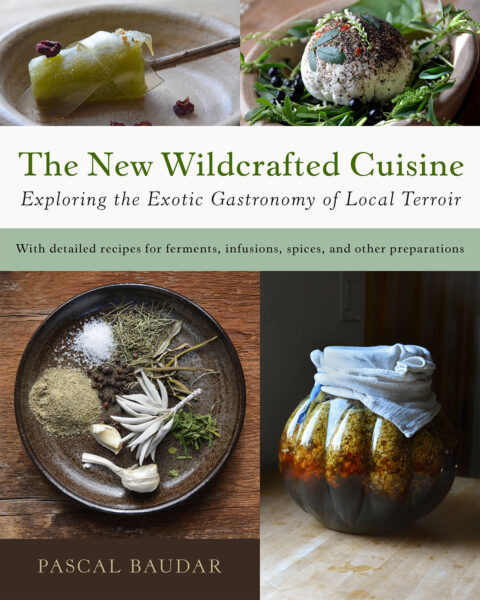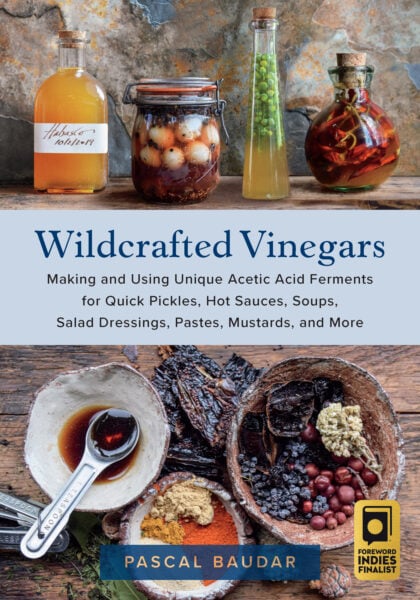Red Wine Salt: A Bold and Flavorful Seasoning
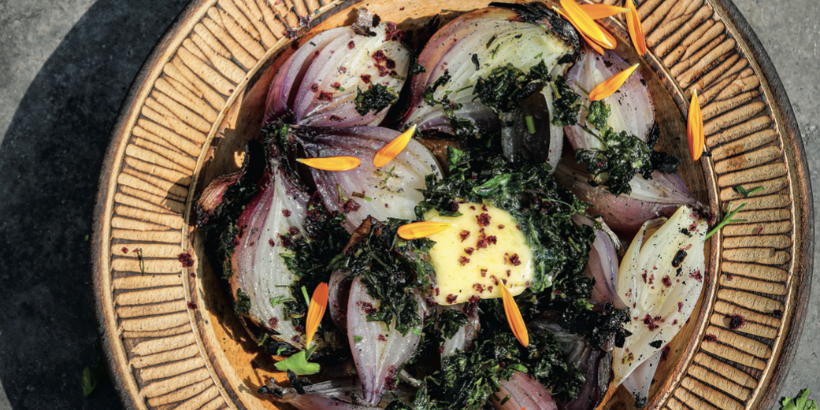
Add a rich and robust twist to your meals with help from red wine salt! This delicious seasoning is a perfect addition to dishes like short rib, lamb chops, roasted potatoes, and more.
The following is an excerpt from Salt and the Art of Seasoning by James Strawbridge. It has been adapted for the web.
Wine Salt: What Is It?
Every wine salt will taste slightly different depending on what wine and which salt you use for your recipe. The basic method can be applied with any drink, and once you’ve tried this recipe, give coffee salt or elderflower cordial salt a try.
The key is to mix the salt with enough wine to coat it evenly and create a wet sand consistency that’s moist to touch but not so much that it dissolves the salt. Choosing salt crystals rather than flakes also helps.
Making Red Wine Salt
I make this flavoured salt completely by eye and feel. Don’t be afraid to have a go – you will be amazed at the results and you’ll never waste the dregs of the wine bottle again.
A clever way to improve the intensity of flavour is to reduce the wine first in a pan over a medium-low heat for 20–30 minutes to make a syrup, then leave to cool slightly before combining it with salt.
After you have made your wine salt, I recommend taking time to dry it properly before using and storing in an airtight container. It goes without saying that you probably need to make both a red and white wine salt for your larder – for the sake of science, of course….
When choosing wines, try bold, full-bodied bottles and robust fruity flavours. From personal experience, a Rioja, Chianti or Merlot works well for red wine salt, and you can’t go wrong with an oak-aged Chardonnay for white wine salt.
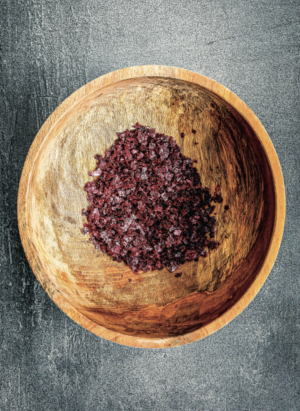 RECIPE: Red Wine Salt
RECIPE: Red Wine Salt
Makes about 150g/51⁄2oz
Ingredients
- 150ml/1⁄4 pint Merlot
- 115g/4oz sea salt crystals
Procedure
- Reduce the wine in a saucepan over a high heat for 10–15 minutes until it forms a slightly thicker syrup.
- Allow to cool slightly, then gently stir the salt crystals into the wine syrup to coat evenly.
- Transfer to a baking tray and dry in a preheated oven at 150°C fan/340°F/gas mark 31⁄2 for 25–30 minutes, or dry overnight in a dehydrator at 50°C/122°F.
- Cool, then store in an airtight container in a cool, dark place for up to 12 months.
- Serve with sliced bresaola, cooked beef short rib, chorizo or lamb chops, dirty onions, or rosemary-roasted potatoes.
RECIPE: Dirty Onions with Red Wine Salt
I think that dirty onions with red wine salt mingling at a party could become a thing. It’s a dish that’s easy to cook, delightful to look at and a pleasure to eat. The red wine salt adds a tannic, fruit-laden seasoning to the smoky, sweet onions, and unsalted butter and parsley introduce the two parts with a polite ease.
Serves 4
Ingredients
- 8 red onions in their skins
- 85g/3oz unsalted butter
- 4 tbsp finely sliced parsley
- Large pinch of Red Wine Salt
- Edible flowers, such as French marigolds or calendula (optional)
Procedure
Roast the onions in their skins over a wood fire or on a bed of hot charcoal – you can cook these dirty straight on the coals or on an open grill. Cook for 25–30 minutes, occasionally turning them carefully, until completely blackened all over.
Inside, the onions will be soft and succulent. Slice each one in half and pull the cooked onion out of the charred outer layer. Put the cooked onions in a serving dish and discard the charred outer layers.
Gently melt the butter and parsley together in a pan and then pour over the onions. Season generously with the red wine salt, then serve with some edible flowers, if you have them.
Recommended Reads
Recent Articles
Chances are, you’ve seen cattails growing on the edge of your local lake or stream at least once or twice. Instead of just passing these plants, try foraging for and cooking them to create delicious seasonal dishes! The following excerpt is from The New Wildcrafted Cuisine by Pascal Baudar. It has been adapted for the…
Read MoreGarlic mustard: while known as “invasive,” this plant can be consumed in its entirety and has great nutritional value. Plus, the garlic-flavor is a perfect addition to any recipe that calls for mustard! The following are excerpts from Beyond the War on Invasive Species by Tao Orion and The Wild Wisdom of Weeds by Katrina…
Read MoreOh, honeysuckle…how we love thee. If only there was a way to capture the sweet essence of this plant so we could enjoy it more than just in passing. Luckily, foraging and some preparation can help make that happen! Here’s a springtime recipe that tastes exactly like honeysuckle smells. The following excerpt is from Forage,…
Read MoreIntroducing…your new favorite brunch dish! This whole broccoli frittata is packed with fresh, wildcrafted flavors that are bound to help you start your day off on the right foot. The following is an excerpt from The Forager Chef’s Book of Flora by Alan Bergo. It has been adapted for the web. RECIPE: Whole Broccoli Frittata…
Read MoreWondering where to forage for greens this spring? Look no further than hedges, which serve as natural havens for wild greens and herbs! The following is an excerpt from Hedgelands by Christopher Hart. It has been adapted for the web. Food from Hedges: Salads and Greens Let’s start by looking at all the wild foods…
Read More

